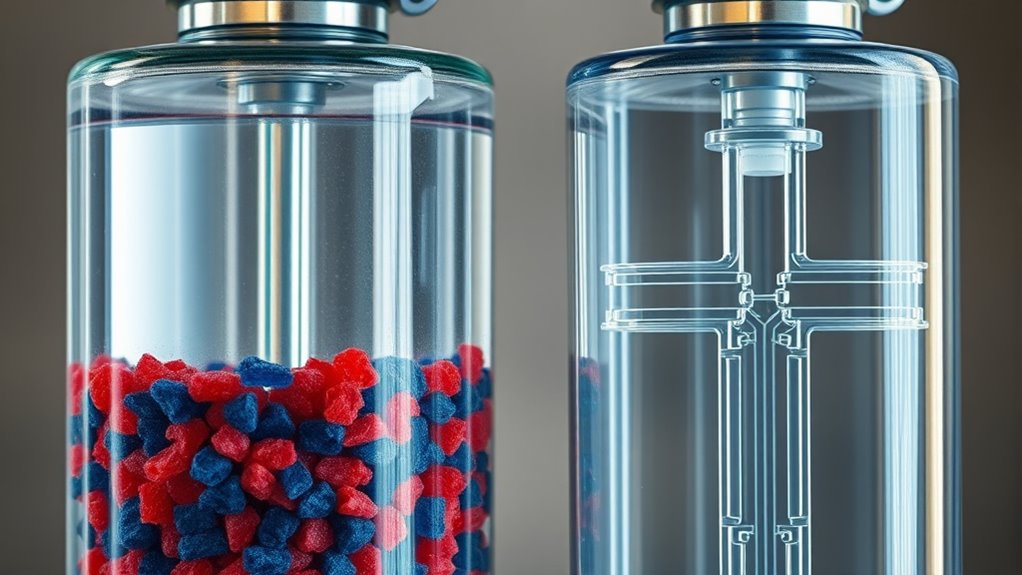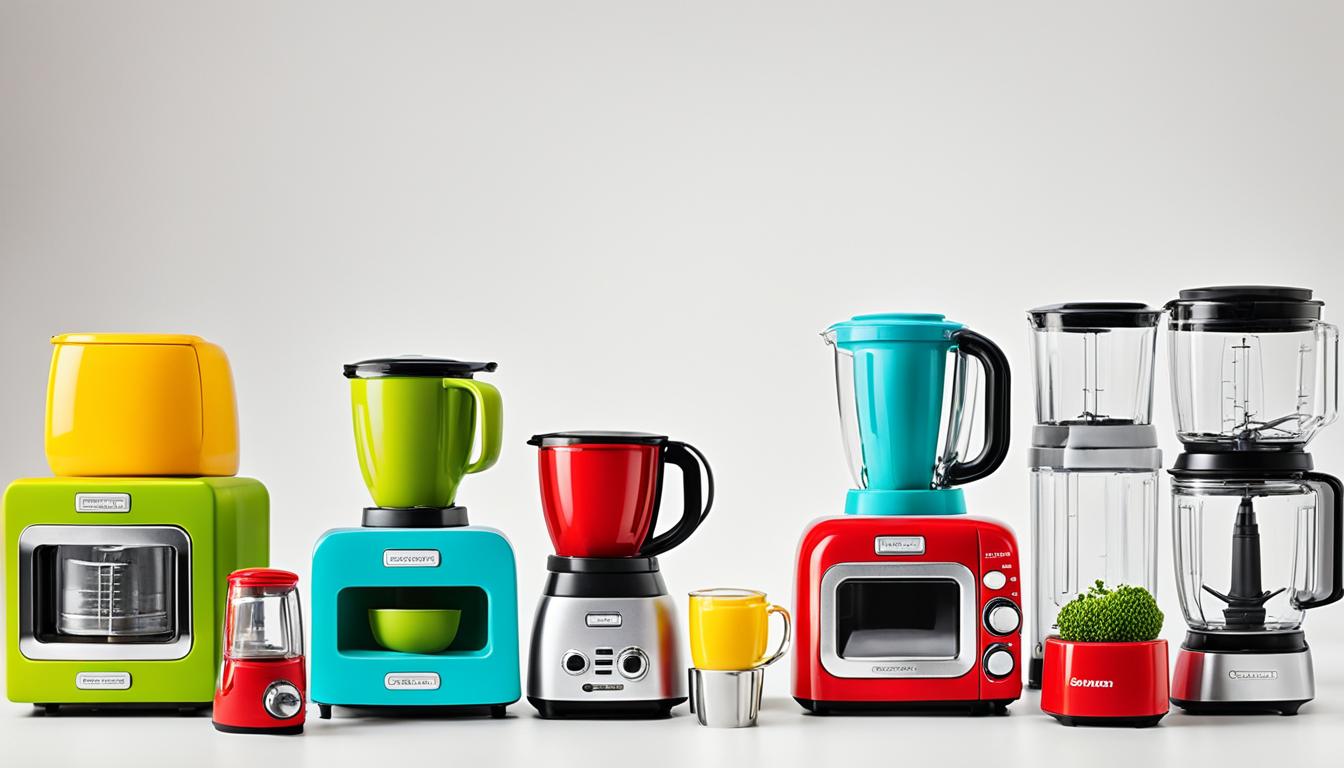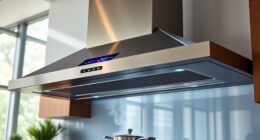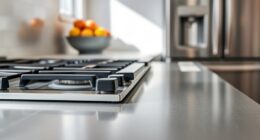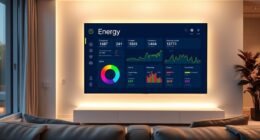Ion exchange water softeners remove calcium and magnesium by swapping them with sodium ions on resin beads, which require regular regeneration with brine. In contrast, template-assisted crystallization turns hardness minerals into microscopic crystals that don’t cause scale, without using salt or chemicals. While ion exchange is effective for heavy minerals, TAC offers a salt-free, eco-friendly alternative. To understand which system suits your needs best, keep exploring the differences further.
Key Takeaways
- Ion exchange removes calcium and magnesium by swapping them with sodium ions, effectively softening water but producing wastewater and salt discharge.
- Template-assisted crystallization (TAC) transforms hardness minerals into insoluble microcrystals, preventing scale without removing minerals or using salt.
- Ion exchange offers higher removal rates for hardness and metals but involves ongoing salt replenishment and wastewater management.
- TAC is low-maintenance, environmentally friendly, and ideal for residential use, with no salt or chemicals involved.
- Choice depends on water quality, environmental impact, maintenance preferences, and whether mineral removal or scale prevention is prioritized.
How Ion Exchange Water Softening Works

Have you ever wondered how water softeners remove minerals that cause scale? It all comes down to the ion exchange process. As water flows through the softener, calcium (Ca²⁺) and magnesium (Mg²⁺) ions—main culprits behind hard water—attach to resin beads. These beads are filled with sodium (Na⁺) ions that swap places with the hardness minerals. When calcium and magnesium bind to the resin, sodium ions are released into your water, making it softer. The resin’s structure, with tiny pores, traps the hardness ions while releasing sodium. This process reduces water hardness and total dissolved solids, preventing scale buildup in pipes and appliances. Water hardness is measured in grains per gallon (GPG). Once the resin’s sodium capacity is exhausted, it needs regeneration to continue softening water effectively. Regular maintenance ensures the regeneration process remains efficient and prolongs the lifespan of the softener. Additionally, understanding the ion exchange mechanism can help homeowners better manage their water treatment systems.
The Role of Resin and Regeneration Cycles
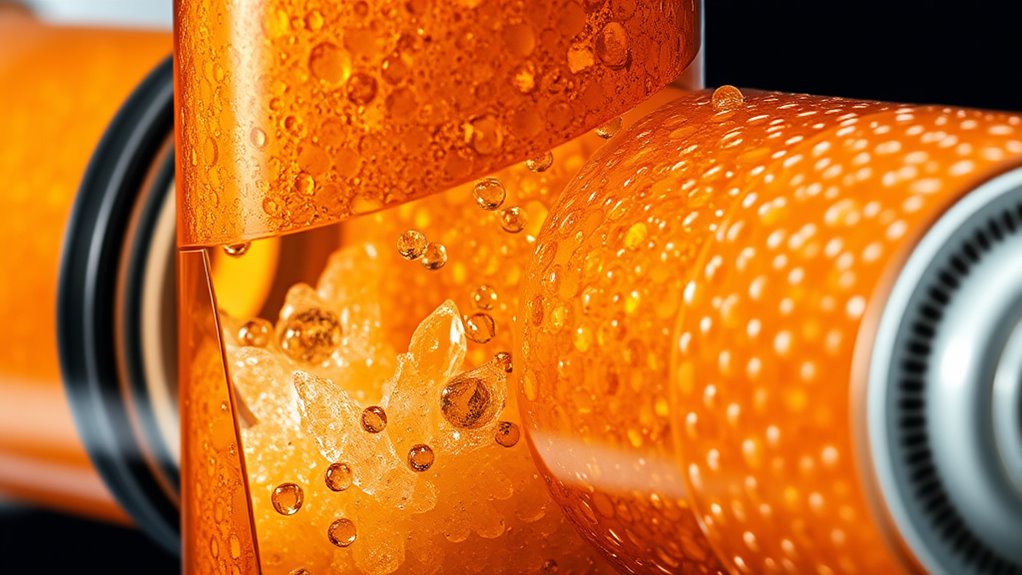
Resin beads are at the heart of the ion exchange process, facilitating the removal of hardness minerals from water. These plastic copolymer beads start in sodium form, holding Na+ ions ready to swap with calcium and magnesium ions in your water. As water flows through, hardness ions bind to the resin, releasing Na+ into the water. Over time, the resin becomes saturated with calcium and magnesium, reducing its effectiveness. Regeneration restores the resin’s sodium form by flushing it with a concentrated brine solution, displacing hardness ions. The process involves backwashing, brine injection, slow rinse, and fast rinse, typically lasting 70 to 90 minutes. Proper regeneration cycles are essential; inadequate regeneration decreases performance, while overdoing it wastes salt and water. Resins are designed to be regenerated multiple times without losing their capacity. Using the proper regeneration cycle ensures the resin maintains optimal performance. Maintaining resin and scheduling regeneration ensures efficient, continuous softening.
Exploring Template-Assisted Crystallization Technology
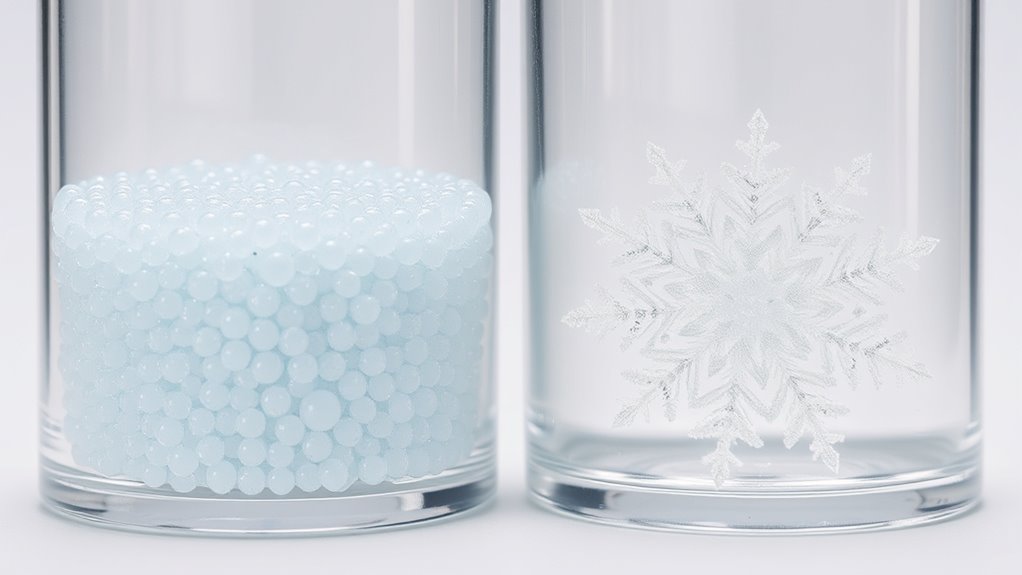
Template-assisted crystallization (TAC) technology transforms hard water minerals into microscopic crystals instead of removing them from your water. It uses specially treated polymer or ceramic beads with nucleation sites to trigger crystallization of calcium and magnesium ions. These crystals are stable and insoluble, so they don’t stick to pipes or appliances, preventing scale buildup. The media isn’t consumed during operation, making it long-lasting, and it requires no salt, chemicals, electricity, or control valves. Water flows through the beads quickly—about five seconds—forming crystals that detach and stay suspended in water. This process effectively reduces scale formation, with lab tests showing up to 99.6% efficiency. Understanding the underlying chemistry can help users appreciate how TAC systems achieve such high performance. TAC systems are simple, eco-friendly, and suitable for residential and commercial use, especially in areas with moderate water hardness. Additionally, integrating advanced detection techniques can enhance system performance by monitoring mineral levels and ensuring optimal operation.
Comparing Environmental Impacts and Sustainability
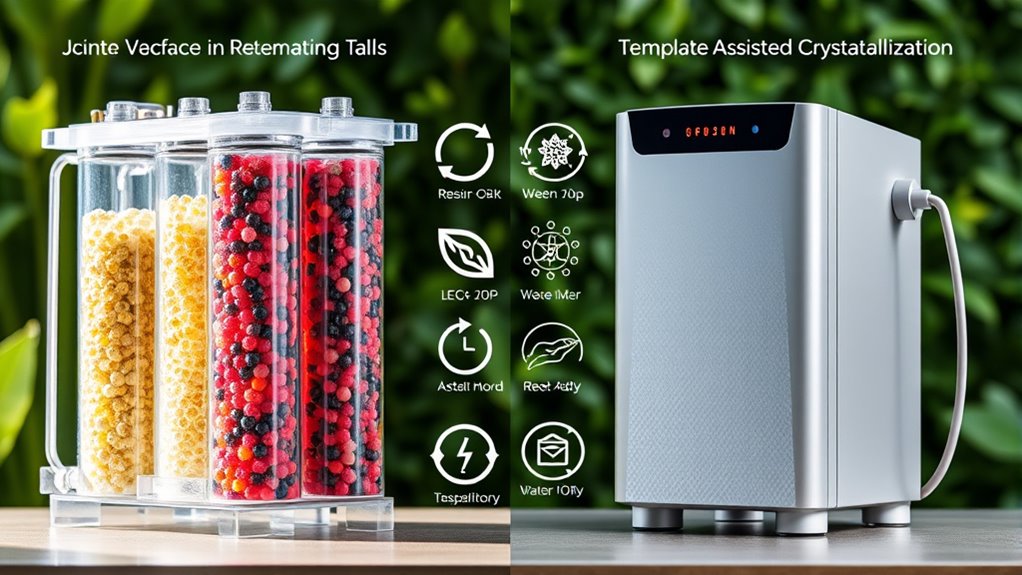
When comparing water softening options, you’ll notice that ion-exchange systems produce waste like salt bags and brine, which can harm ecosystems and require disposal. They also use chemicals during regeneration, raising concerns about chemical runoff and environmental health. Salt-free systems generate less waste and avoid chemical use, making them a more sustainable choice overall. Additionally, considering the total-cost clarity of each system can help homeowners make more environmentally responsible decisions. Understanding the environmental impacts of various systems can further guide sustainable choices in water treatment.
Waste Generation and Disposal
Water softeners differ markedly in their waste generation and environmental impact. Ion exchange systems produce about 25 gallons of wastewater daily, mainly during regeneration, which can reach 40% more in hard water areas. Larger units use 35–40 gallons per cycle, while smaller ones use 20–25 gallons. TAC softeners generate negligible waste since they don’t require regeneration. Discharge from ion exchange contains high sodium and chloride, harming ecosystems and septic systems, especially with high sodium ratios. TAC waste is mostly harmless solids, easier to dispose of. Proper disposal methods are essential to minimize environmental impact and promote sustainable practices. Additionally, advancements in waste management technologies can further reduce the ecological footprint of water softening processes.
Chemical Usage and Ecosystem Impact
Ion exchange softeners rely on chemical salts like sodium chloride and potassium chloride to regenerate their resins, which means they consume considerable amounts of chemicals and produce waste that impacts the environment. Discharging brine introduces chloride ions and residual salts into wastewater, increasing salinity and risking harm to aquatic life. Sodium chloride is effective but can degrade soil health if disposed of improperly. Potassium chloride, being a plant nutrient, may have less environmental harm when released in controlled amounts. Additionally, anti-iron and chelating agents used in some systems can persist in effluent, affecting ecosystems. Proper handling and disposal of regeneration chemicals are essential to prevent contamination. In contrast, template-assisted crystallization uses no chemicals, minimizing chemical inputs and reducing environmental impact markedly.
Effectiveness in Removing Hardness and Other Contaminants
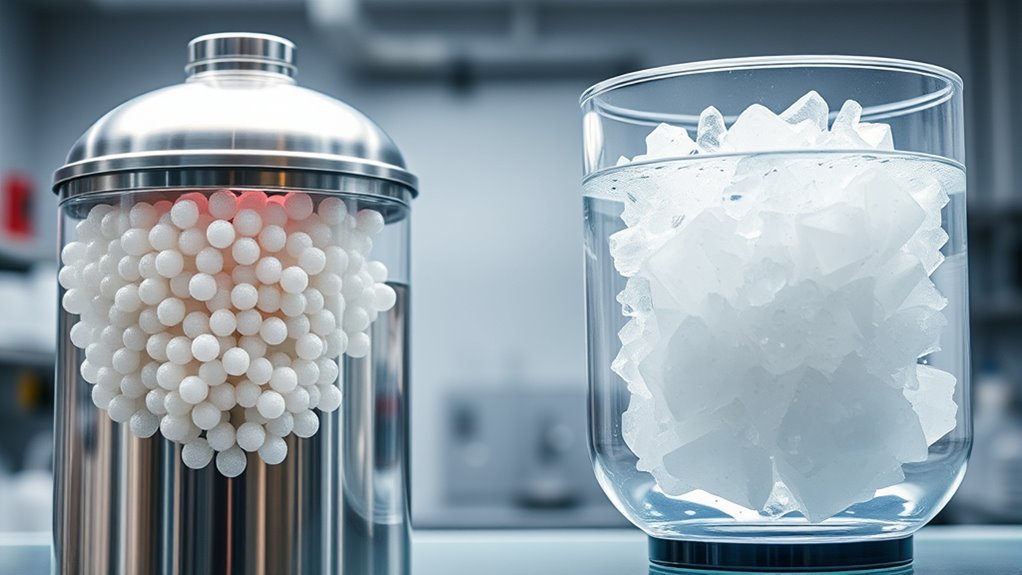
Ion exchange softeners are highly effective at reducing water hardness, removing up to 99% of calcium and magnesium ions responsible for scale buildup. Typically, they cut water hardness by about 75%, improving cleaning efficiency and extending appliance lifespan. The process replaces calcium and magnesium with sodium ions, preventing scale formation in pipes and appliances. Effectiveness depends on factors like resin tank capacity, flow rate, and regeneration cycles. Recent improvements in resin technology have increased lifespan and selectivity, boosting performance over time. Additionally, ion exchange softeners can remove dissolved ferrous iron (up to 5 mg/L) and small amounts of manganese. However, they don’t target insoluble ferric iron, bacteria, nitrates, lead, or organic contaminants, which require supplemental treatment methods for all-encompassing water purification. Understanding the effectiveness of ion exchange is essential for optimizing water treatment solutions.
Operational Costs and Maintenance Considerations
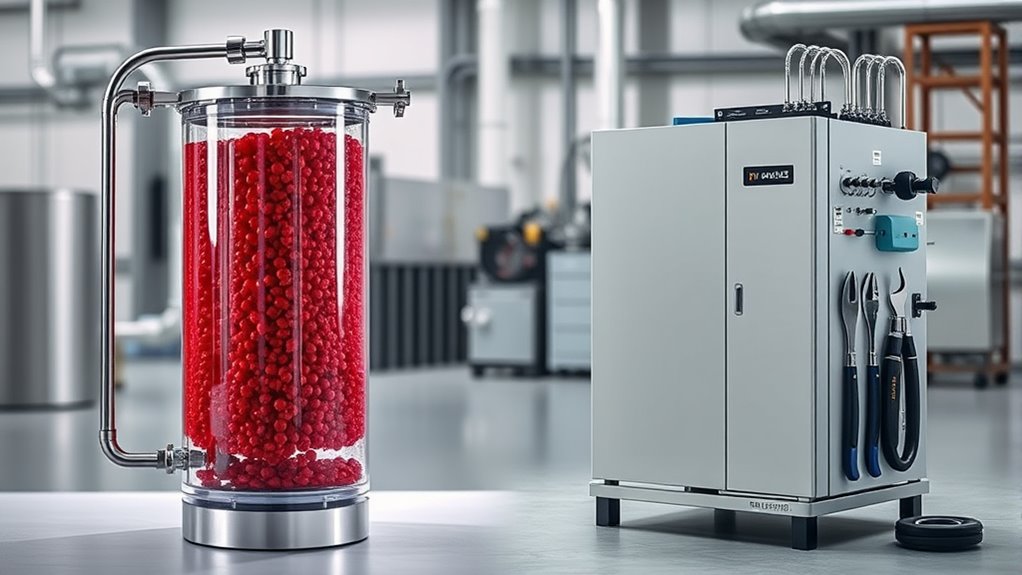
Understanding the operational costs and maintenance needs of water softeners is essential for managing long-term expenses. Ion exchange systems have costs that include installation, which ranges from $200 to $600, and unit prices that vary widely, from $200 to $6,000. Ongoing costs mainly involve salt replenishment, which increases with household size and water hardness, and annual maintenance contracts averaging $100 to $250 for inspections, cleaning, and testing. Regular salt refills and semi-annual service calls help prevent costly repairs and prolong equipment life. Larger households, higher water usage, and local utility rates impact operating costs further. In contrast, TAC systems typically have higher upfront costs but lower ongoing expenses, thanks to no salt, chemicals, or electricity needs, and simpler maintenance, mainly annual media cleaning. Additionally, vetted options like Fin and Forage offer specialized features that can enhance system performance and durability, and understanding operation costs helps homeowners choose the most suitable system for their needs.
Suitable Applications for Each Water Softening Method

Choosing the right water softening method depends on your specific needs and water quality. If you’re dealing with high mineral content and need to protect appliances or ensure process efficiency, ion exchange systems are ideal. They effectively remove calcium and magnesium, making them suitable for industrial, commercial, and reverse osmosis pretreatment applications. You might also use them for removing heavy metals or nitrates when configured properly. On the other hand, if you prefer a salt-free, low-maintenance solution that prevents scale without altering water chemistry, template-assisted crystallization (TAC) works well. It’s perfect for residential and light commercial settings, especially where salt discharge is restricted. TAC is also suitable for maintaining water heaters and boilers, offering a simple, eco-friendly alternative with minimal operational complexity. Additionally, understanding zoning laws is crucial when installing a water softener system, particularly in areas with strict regulations on water treatment devices. It’s important to consider that some water softening methods may be more suitable for specific water qualities, such as hard or contaminated water, to ensure optimal performance and compliance.
Choosing the Right System for Your Water Quality Needs
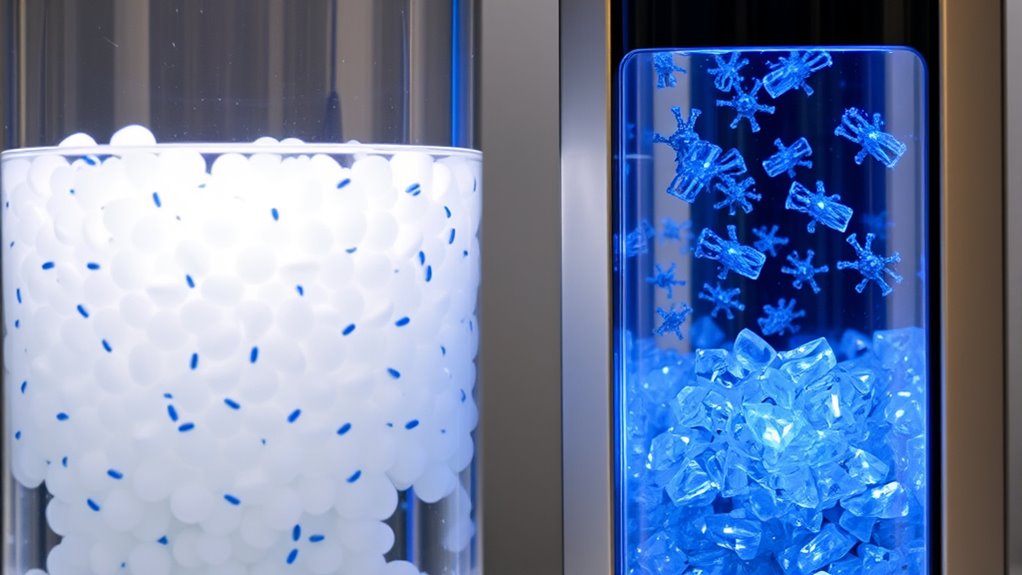
Your water hardness level plays a key role in choosing the right softening system. If your water has high mineral content, an ion exchange softener may be more effective, but for moderate hardness, a salt-free system could suffice. Consider environmental impacts and ongoing maintenance costs to find the best fit for your needs. Additionally, understanding the role of attention in maintaining your water system can ensure more consistent and effective results. Recognizing how fatherhood influences character can also serve as a reminder to nurture and care for your water quality with dedication.
Water Hardness Levels
How do you determine the right water treatment system for your needs? First, test your water to measure its hardness, usually expressed as calcium carbonate (CaCO3). Soft water (0–60 mg/L) requires little to no treatment, while moderately hard water (61–120 mg/L) may benefit from mild softening. Hard water (121–180 mg/L) often causes scale buildup, needing robust solutions like ion exchange. Very hard water (>180 mg/L) demands intensive treatment to protect appliances and plumbing. Knowing your water’s hardness helps you choose between options like salt-based ion exchange systems or salt-free conditioners like TAC. Remember, the severity of hardness influences treatment effectiveness, maintenance, and health considerations. Accurate testing guarantees you select the most suitable system for your water quality needs.
Environmental Considerations
Environmental considerations play a crucial role when selecting a water treatment system, as the impact extends beyond water quality to surrounding ecosystems and communities. Ion exchange softeners discharge salty brine wastewater high in sodium and chloride, harming soil health, increasing erosion, and raising water salinity, which threatens aquatic life. This discharge complicates municipal wastewater treatment and can lead to bans or restrictions in sensitive areas. In contrast, saltless systems like template-assisted crystallization avoid salt use, eliminating salty waste and reducing environmental pollution. They also require less maintenance, lowering resource consumption and waste. While ion exchange systems may be more effective for very hard water, their environmental footprint can be significant. Choosing the right system involves weighing water treatment needs against ecological impact, especially in environmentally sensitive regions. Additionally, understanding the benefits of gorse plants for bees can promote eco-friendly landscaping choices that support local pollinators and biodiversity.
A comprehensive evaluation of environmental impact helps ensure sustainable water treatment solutions that minimize ecological disruption.
Frequently Asked Questions
Can Template-Assisted Crystallization Remove Other Contaminants Besides Hardness?
No, template-assisted crystallization can’t remove other contaminants besides hardness. It specifically targets calcium and magnesium minerals to prevent scale buildup by forming microscopic crystals. If your water has iron, manganese, sediments, or organic compounds, TAC won’t eliminate them. You’ll need additional treatment methods like filtration or chemical processes to address those contaminants. Relying solely on TAC won’t provide all-encompassing purification for other water impurities.
How Does Water Temperature Affect Ion Exchange and TAC Efficiency?
Think of your water system as a dance floor—temperature sets the rhythm. As water heats up, ion exchange becomes more energetic, with ions moving faster and exchanging more readily, like dancers in sync. Meanwhile, TAC accelerates, with crystals forming more quickly, akin to dancers twirling faster. Higher temperatures boost both processes’ efficiency, ensuring your water softening dance flows smoothly and effectively.
Are There Health Concerns With Sodium Release From Ion Exchange Systems?
You generally don’t need to worry about health risks from sodium release in softened water unless you’re on a sodium-restricted diet or have hypertension. The sodium levels are usually very low, about 12.5 mg per 8-ounce glass, which is safe for most people. If you’re concerned, consider using a reverse osmosis filter or potassium chloride for regeneration to reduce sodium intake. Always test your water to stay informed.
What Are the Lifespan Differences Between Ion Exchange Resins and TAC Media?
Like the timeless flow of a mighty river, your water treatment system has its own lifespan. Ion exchange resins typically last 10-15 years, sometimes up to 20 with proper care. In contrast, TAC media generally endures 5-10 years. Regular maintenance, water quality, and usage influence these durations, with ion exchange systems needing more frequent attention. Ultimately, understanding these differences helps you plan for replacements and keep your water soft and clean.
Is Maintenance More Complex With Ion Exchange or TAC Systems?
Maintenance is more complex with ion exchange systems. You need to regularly check and replenish salt, clean or replace resin every 10-15 years, and inspect control valves and other parts regularly. Plus, you must monitor water hardness and perform regeneration cycles. In contrast, TAC systems require less frequent maintenance—mainly media replacement every 3-5 years and occasional flushing—making them easier and less time-consuming to manage.
Conclusion
Did you know that over 85% of homes in the U.S. struggle with hard water issues? Choosing between ion exchange and crystallization depends on your needs, budget, and environmental priorities. Ion exchange is highly effective but requires regular regeneration, while crystallization offers a low-maintenance, eco-friendly alternative. By understanding these options, you can make an informed decision to improve your water quality and protect your household appliances for years to come.
